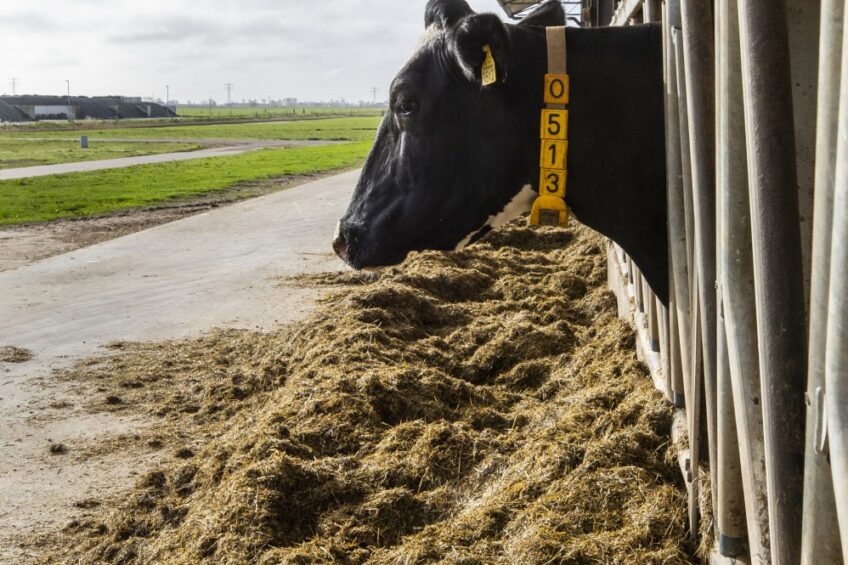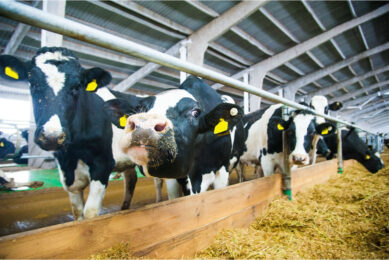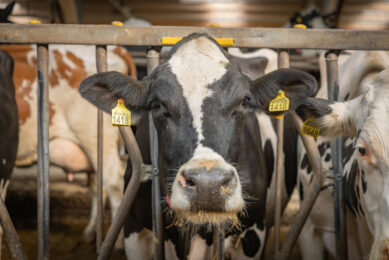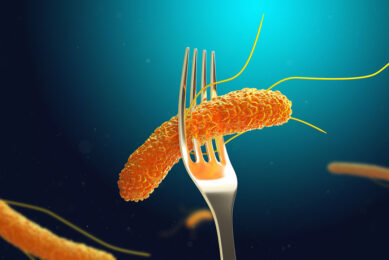Yeast as a feed supplement for dairy cows

Yeast is a probiotic material that is currently being used in many parts of the world as a feed supplement for livestock. The use of yeast in animal feeding programmes has in many cases resulted in improved rumen fermentation, animal health, milk yield, and adaptation to heat stress.
Economically, yeast is a low-cost material compared to other feed supplements and can thus cost-effectively improve the performance of animals. Certain points should, however, be considered when attempting to make full use of yeast in cattle feeding programmes.
Preparing the yeast material
The process of producing yeast biomass involves inoculation of a culture media containing products of the sugar refining or cereal grain raw ingredients with live yeast cells. Fermentation of the media takes place in large tanks using microbial strains such as C. cervisia, T. utilis, and C. lypolitica.
Once the fermentation media fills the tank, it is harvested by centrifugation and allowed to dry. The isolated biomass of yeast is then hydrolysed to release nucleic acids and treated with methionine and some flavouring agents containing peptides and minerals. The material is finally incorporated into the cattle’s diet at up to 50 g per head per day.
Yeast and rumen fermentation
Yeast can scavenge oxygen from the rumen, making the ecosystem more favourable for the growth and activity of rumen anaerobic microbes. It also can increase cellulolytic activity in the rumen and increases nutrient digestibility, especially for rich fibre diets.
Yeasts have also been shown to regulate the rumen pH and limit acidosis risks by regulating both lactate producing and lactate utilising bacteria. A microbial strain such as S. cerevisiae is a rich source of nutrients such as peptides, vitamins, organic acids, and cofactors which may be required by the rumen bacteria.
Effect on animal health
In a study with dairy calves, it was found that incorporating yeast culture at 2% of the grain fed from 2 to 70 days of age improved the neutrophil function when the yeast cells were incubated with pathogenic E. coli. Calves fed with yeast tended to have fewer days with mild or watery diarrhoea. Cases of fever per calf were also reduced by feeding yeast culture.
Because of the reduced incidence of such health disorders, the proportion of calves treated with anti-inflammatory and anti-diarrhoea products was reduced and calves treated with antibiotics tended to be reduced, too (for yeast culture compared with control). Net income was higher, approximately US$0.48 for calves fed with a yeast culture because of the improvement in income with calf value. The mortality rate was markedly lower with yeast culture after 13 days of age. Risk of mortality past day 13 was 6-fold less for yeast culture compared to the control.
Effects on milk yield
Adding yeast to dairy rations may improve milk production and profitability in dairy cows. This may be attributed to 2 distinct mechanisms:
- With yeast supplementation, there are changes in the rumen microbial population, rumen fermentation, intestinal nutrient flow, and diet digestibility, all of which favour increased milk yield.
- Yeast products are rich in B vitamins, amino acids, peptides, nucleotides, and phenolic compounds that can act alone or in combination as antioxidants, appetite stimulants, inhibitors of pathogen colonization, and/or immune nutrients.
In many cases, however, inconsistent responses have been observed. One explanation for this inconsistency is the differences in inclusion level, type of diet fed, feed intake, and the use of additional feed additives, in addition to factors such as age, physiological stage, health, and stress status.
Adaptation to heat stress
The effects of yeast supplementation on heat-stressed cows can be summarised as follows:
- Improvements in DM intake, lactation performance, and feed efficiency.
- Supplementing with yeast culture reduces the rectal temperature of heat-stressed dairy cows, suggesting an action on thermoregulatory functions.
- Under heat stress, yeast supplementation may increase nutrient flow to the small intestine and thus dairy cow performance.
- Yeast supplementation stimulates the synthesis of niacin in the rumen. Niacin can stimulate skin vasodilation by acting on vascular prostaglandin receptors and hence increase peripheral heat loss in dairy cows.
- Yeast-supplemented cows have a lower respiratory frequency suggesting that they are more efficient at dissipating heat.
- The improved heat dissipation in response to yeast supplementation may reduce the maintenance energy required for thermoregulation.
- Plasma glucose content is increased when heat-stressed dairy cows are supplemented with live yeast. Cows in heat stress have increased reliance on glucose as an energy source.
- The increased glucose availability to the mammary gland, in response to yeast supplementation, apparently increases lactose synthesis, resulting in a positive milk yield response. In one study, it was found that yeast supplementation increased milk yield (+1.2 kg/day) during the first 130 days of lactation.
- Yeast-supplemented cows also tend to ruminate longer, have a lower mean rumen temperature, and spend less time with a rumen temperature above 39°C. In theory, a more stable rumen temperature can facilitate heat dissipation under heat stress.
Points to consider
Yeast is high in nucleic acids, particularly RNA. With such high levels of nucleic acids, there is an increased metabolic rate of purine in the liver. Consequently, uric acid is produced in large amounts, leading to urinary calculi and other metabolic problems. These problems could partially be alleviated when the yeast products are used in rations in restricted amounts.
Yeast could also have toxic effects on animals, especially when produced in culture media containing petroleum derivatives. Cattlemen and women should, therefore, obtain the yeast material from trusted sources and ensure that the quality and composition of that material is verified.
The imbalanced supply of amino acids is also a problem associated with feeding yeast. Yeast biomasses are usually high in lysine and low in arginine. The increased ratio of lysine-to-arginine in the ration may have negative impacts on growth and other biological functions, due to improper metabolism and synthesis of protein in the animal body. This ratio should, therefore, be corrected by adding arginine upon yeast processing. Additional methionine should also be considered to correct deficiencies and obtain maximum performance.
References are available from the author upon request.
The Dairy Global Newsletter
Sign up for our newsletter and receive all our need-to-know content three times a week.










